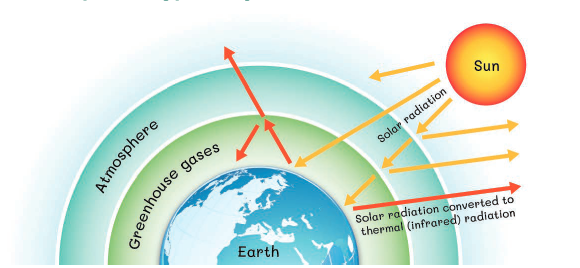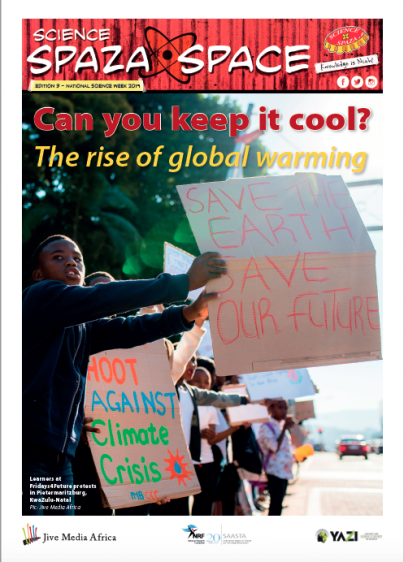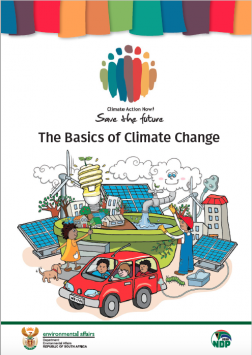
- There is an increase in the average global temperature of about 1°C.
- A 0.19 m rise in the average global sea level has been observed.
- There is reduced snow cover in the northern hemisphere, melting ice sheets in Greenland and Antarctica and there’s a 4% decrease in Arctic ice.
- Average precipitation over mid-latitude areas in the Northern hemisphere has significantly increased. There are more heavy rainfall events over most land areas. This leads to a higher risk of flooding in certain areas.
- Since the 1970s, droughts are longer and more intense. Drying in the Sahel, the Mediterranean, southern Africa and parts of southern Asia.
- Though some places have become colder, the general trend is a decrease in cold days and nights, with an increase in heat waves, as well as warmer days and nights.
- Over 30% of the increase in carbon dioxide has been absorbed by the oceans. The oceans are now 26% more acidic and in combination with warmer seawater, this is impacting marine life.
PLANTS AND WILDLIFE
Climate change has major impacts on biodiversity. Wildlife and plants will need to cope with:
- Habitat destruction and extreme weather events.
- Changed timing of seasonal events such as breeding and migration.
- Important events could go out of sync – like flowering and pollination.
- Species could become extinct or move to cooler locations.
- Warmer, more acidic seawater kills sea creatures.
- Some species, like fish, are becoming smaller to cope with higher temperatures.
PEOPLE
Unhealthy ecosystems cannot protect people against climate change.
- They cannot capture as much carbon and keep it out of the air.
- They can’t protect against the impacts of extreme weather events.
- If ecosystems aren’t doing their job, the air we breathe and water we drink can no longer be cleaned properly.
- Excessive heat dries the soil, shortens growing periods and could increase weeds, pests and diseases. This could eventually result in complete crop failure.
- Extreme weather events and unpredictable rainfall affects crops that humans eat.
- Hotter conditions make it difficult to keep humans and livestock well-fed.
- More disease puts those living with HIV/AIDS at risk. Other health concerns include hunger, malnutrition, air pollution and heat stress.
- Many South Africans are living in poverty, have a high disease burden and inadequate housing. Because they are vulnerable, they can’t cope well with extreme climate events.
CLIMATE CHANGE AND THE ECONOMY
Very high temperatures are bad for the economy. A changing climate means a changing economy.
- ENERGY: Hotter weather demands more electricity for air conditioning. Higher energy demand makes electricity prices climb.
- FORESTRY: More disease outbreaks and resistance threaten forests and plantations. These are not just responsible for removing large amounts of carbon dioxide out of the air but could replace fossil fuels as a fuel source.
- FOOD: Food prices are increasing. Income from fisheries is declining due to smaller catches and destruction in coral reefs.
- TOURISM: Tourism contributes to greenhouse gas emissions and has a massive carbon footprint.
POVERTY
Climate change burdens the poor. The disadvantaged are the most vulnerable to climate change. Reasons include:
1. More food and water insecurity
2. Higher food prices
3. Loss of jobs
4. Negative health effects
5. Being forced to move

This article was published in collaboration with the Department of Environmental Affairs
We're getting ready for #SFSA2019!
That's right friends...we're heading to Science Forum South Africa (SFSA) 2019!
GET EXCITED!
This years theme is:
Igniting Conversations About Science For Innovation With Impact
The 2019 event will take place at the CSIR International Convention Centre from the 4th to 6th December 2019 and will showcase the latest in technology and innovation! Join us in igniting conversations about science and innovation in South Africa. Visit our table in the foyer for your free copy of Spaza Space! Come and engage with the team and find out how you can get involved!

What is Climate Change?
Climate change is different from changes in the weather. Weather can change from day to day and hour to hour, while climate is the average pattern of weather over a long time. Climate change is an alteration of the earth’s general weather conditions. The most prominent part of climate change is the rising temperature at the earth’s surface. Apart from increasing average temperature, climate change also includes changes in rainfall patterns and an increase in extreme weather events that lead to phenomena such as floods and droughts.
The Greehouse Effect
When the sun shines on Earth, some of its solar radiation (in the form of light energy) is reflected by Earth’s surface and the atmosphere. The rest of the solar radiation is absorbed by Earth’s surface and atmosphere and is converted to heat energy (infra-red radiation) that warms Earth. The infrared radiation is emitted from Earth’s surface again but not all of it escapes to outer space. Some of the radiation is absorbed and reemitted in all directions by greenhouse gas molecules. These gases act like a blanket that keep Earth’s surface and the lower atmosphere warm. This is called the natural greenhouse effect. Earth’s average temperature is 14°C, a comfortable temperature to sustain life. Without the greenhouse effect, so much infra-red radiation would be lost that Earth would be an icy -19°C. At these frigid temperatures, life as we know it would not be possible.

Greenhouse Gasses
The atmosphere is a layer of gases that surround Earth. These gases are mostly nitrogen (78%) and oxygen (21%). There are also smaller amounts of other gases present in the atmosphere. Among these gases are the greenhouse gases that are responsible for trapping the sun’s heat inside the atmosphere and keeping the planet warm. The most prominent greenhouse gases are water vapour (water in its gaseous phase), carbon dioxide, nitrous oxide and methane. When plants, animals and bacteria from long, long ago became fossilised, the carbon inside them became buried. Over the years, they turned into fossil fuels namely coal, oil and gas. Humans started burning large amounts of fossil fuels during the industrial revolution in the nineteenth century and this started releasing the ancient carbon back into the atmosphere. Humans have also been chopping down large forests, which reduces the Earth’s natural ability to absorb greenhouse gases. Agricultural practises, in particular, have increased the levels of methane and nitrous oxide in the atmosphere. With an increase in greenhouse gases, Earth loses less heat, causing warming of the planet. This warming effect is called global warming but it leads to various changes in climate all over Earth, even making some places colder.
Thank you to the Department of Environmental Affairs for partnering with us on this article
“Sjoe! This has got to be the hottest summer I have ever experienced, and mind you, I have been living here since I was born. I’m telling you – this climate change is bad.”
We all have conversations about the weather, mostly because a discussion on the weather is the perfect conversation starter and what better way is there to fill-up that awkward conversation gap, right? As normal as the weather may seem, everyone experiences it on a daily basis, and so a weather discussion can result in quite lively conversations. Nowadays, the term climate change is sure to pop up in casual conversations about the weather, directly related to the level of discomfort that someone is experiencing, and is generally used at the end of the conversation. One that no one can argue with. The grand finale to the weather discussion. In reality, while the term “climate change” has become quite popular in casual conversations, print media and social media, very few people actually understand the impact of climate change.
Climate change is about more than JUST the weather. For example, has it ever occurred to you that climate change may have a huge impact on your health? Possibly not; you may have had to think a bit about that one. So how does climate change affect your health? Extremes of temperatures are obviously not good, and with climate change causing an increase in the average global temperatures, it’s definitely going to become much warmer. Continuous exposure to hot conditions can result in many heat-related illnesses ranging from sunburn to heat exhaustion, heat cramps, and the dangerous sun stroke (or heatstroke). While these may happen to literally anyone, the very young, the very old, individuals with underlying medical conditions, those with weak immune systems, and those who do not have proper clothing and/or housing, are at a higher risk. Higher temperature also result in an increase in air pollution and pollen, which could trigger asthma and worsen other cardiovascular and respiratory diseases.
Believe it or not, temperature extremes can have effects on your mental health too, which may eventually affect your work and relationships. It already sounds pretty worrying right? Unfortunately, there’s more. There are many indirect health effects of climate change as well. Weather-related natural disasters are on the rise. An increase in droughts will lead to unreliable levels of food production, leading to hunger and famine. Increase in floods will lead to local devastation and disruption, with injuries and death, and affected individuals will be exposed to unclean water sources. This will lead to an increase in infectious water-borne diseases such as bilharzia. The recent cholera outbreak in Mozambique, following Cyclone Idai, is just one, close-to-home example.
Insect and snail populations are also sensitive to climate change. Increasing temperatures would mean a wider distribution of vector-borne diseases (diseases which cause human illnesses, caused by parasites, viruses and bacteria carried by insects) such as malaria which is carried by mosquitoes, and possibly an escalation in the number of people infected. So yes, climate change will definitely impact on health. According to the World Health Organisation, climate change will result in approximately 250 000 additional deaths per year, between 2030 and 2050. These would be as a result of heat stress, malaria, diarrhoea, and malnutrition.
So the next time you are having one of those well-known weather conversations, don’t forget about all the serious health effects of climate change. Try to steer the conversation to ways that we as individuals can impact climate change – waste less food, switch to a more plant-rich diet, save energy in our homes and using public transport are just some examples. The group effort of small changes can make a huge impact. Let’s do our part in the fight against climate change.
- Written by Sabeehah Vawda, SAASTA
Read the article and complete the crossword

Thank you to SAASTA for partnering with us on this feature.
Check out our latest edition of Spaza Space! This edition focuses on National Science Week and Climate Change. Go through this edition, read the articles and complete the fun activities.
Download the Climate Change booklet to learn all about about climate change.
Thank you to the Department of Environmental Affairs and SAASTA for collaborating with us on these resources!







